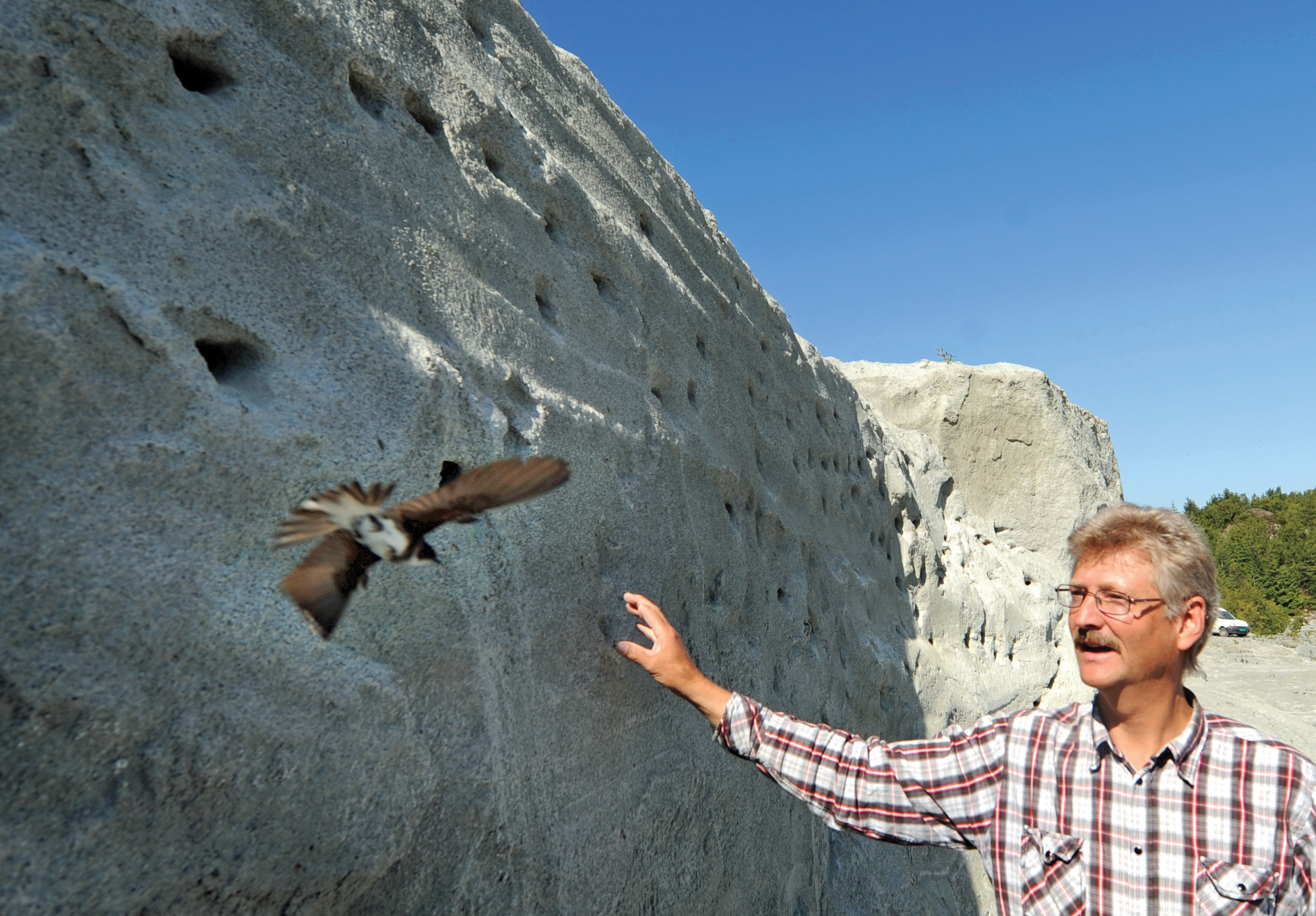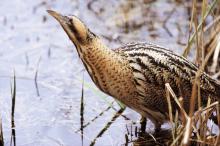
Quarries offer huge potential to increase the biodiversity of an area. Claire Symes looks at a project implemented by Heidelberg Cement to protect the sand martin.
While many people still view quarrying as a destructive industry, those that work in and around them often witness first hand the wide variety of wildlife that thrives in pits. It is not just restored workings that provide habitats for protected species, many birds and animals are often found close to active areas of quarries. However, this presence is good for the image of quarrying, it can impact on production if activity has to be halted for breeding and nesting periods.
This was an issue that Heidelberg Cement had come up against in Germany with nesting sand martins. But the company's biodiversity and natural resources manager Michael Rademacher has developed a technique to ensure extraction and nesting do not have to be mutually exclusive.
"The sand martin only exists in Europe due to quarrying activity," explained Rademacher. "The original habitat was banks near rivers that were freshly uncovered by flood water, which left a weakly consolidated face which the birds could burrow into. The newly excavated walls in a quarry replicate this natural habitat to the extent that 100% of the sand martin population in Germany is related to quarrying.
"The sand martin is protected under the
"There was a need to combine nature protection and raw materials protection as stopping work for that length of time is not financially viable. So we started trying to work together in order to protect the reserves and continue extraction and prevent bird habitats from suffering as a result." Rademacher, who studied biology and zoology at university and later gained a PhD in mining, started working on a pilot scheme in Germany in 2006. "We started by mapping the species to identify habitats and potential habitats," he said. "We then developed an approach of creating a freshly excavated bank away from the active area of the quarry so that the birds could nest in peace." Last year, Heidelberg started to roll out the scheme to other countries in Europe.
"One of the best examples is a quarry in Norway where they had problems with sand martins impacting on production," said Rademacher. "But we showed them how to create the habitat and helped fund the work and 10 days later, there were 500 sand martins nesting in the new habitat away from the active area of the quarry." The scheme has initially been funded centrally to demonstrate that it is simple to create something positive and all of the projects are continuing in 2010 but will be funded locally.
"The habitat can be created in one or two hours but the first time needs the assistance of external consultants to ensure it is done correctly," said Rademacher. "Once the quarry manager understands the principles, then they can work on it independently." While the scheme focuses on one species, Rademacher explained that the sand martin is an important indicator species. "Sand martins were common across Europe but the habitats are being destroyed and lost as there is very little true flooding allowed," he said. "But they are a pioneer species and where they are found, you can usually find grasshoppers and little winged pluvers in the same area.
"Some species are key for others to be there and using that technique is more cost effective. Mapping a 60 to 70ha quarry in detail for ecology can cost €50,000 to €60,000 and only represents one season, so mapping key species reduces the cost but is still representative.
"The biodiversity of some quarries is better than the agricultural land surrounding it partly because they provide an area free from fertilisers and relatively free from human contact and some species thrive. The eagle owl is often found in hard rock quarries - around 30 to 40% of the European population are found in quarry sites - and not just abandoned ones either. Peregrine falcons are also well known for nesting in active quarries." According to Rademacher, achieving biodiversity while balancing it with production in quarries takes careful management. "The presence of a specific species can restrict development - it is nice to have the species present but you have to take care of them too," he said.












